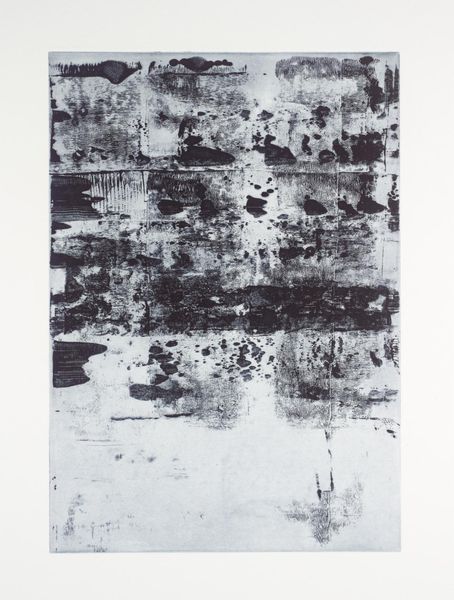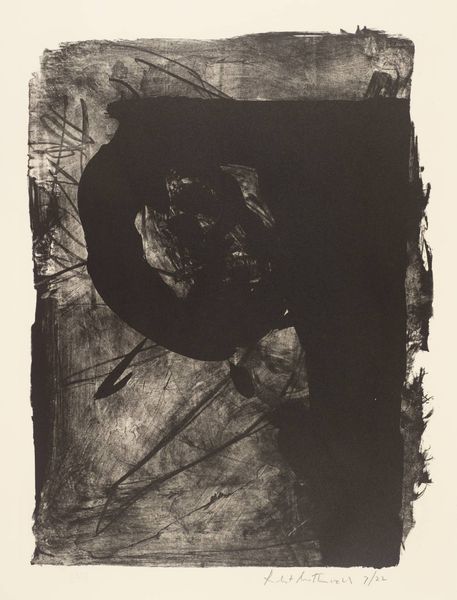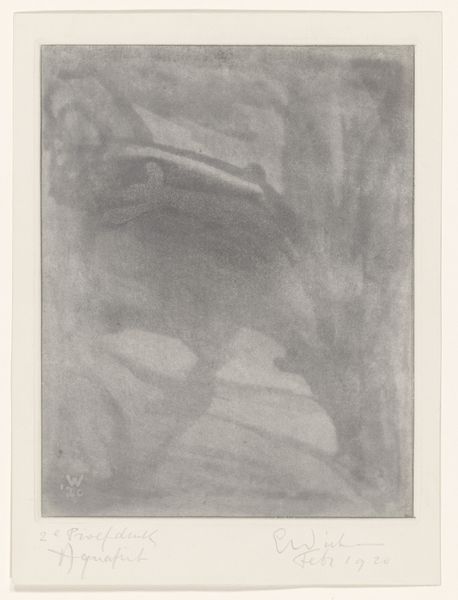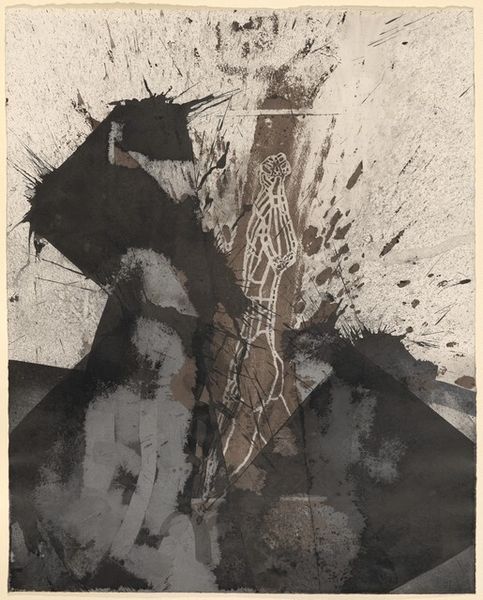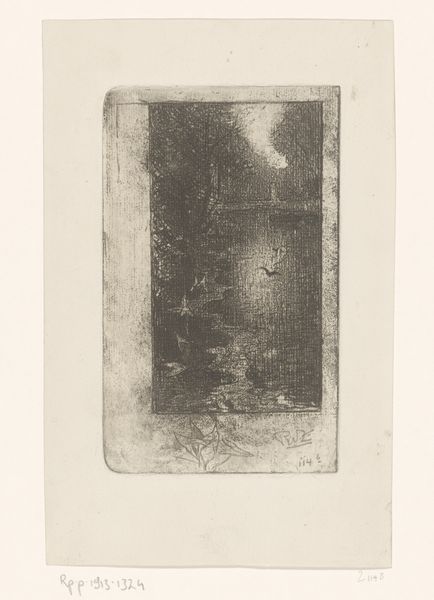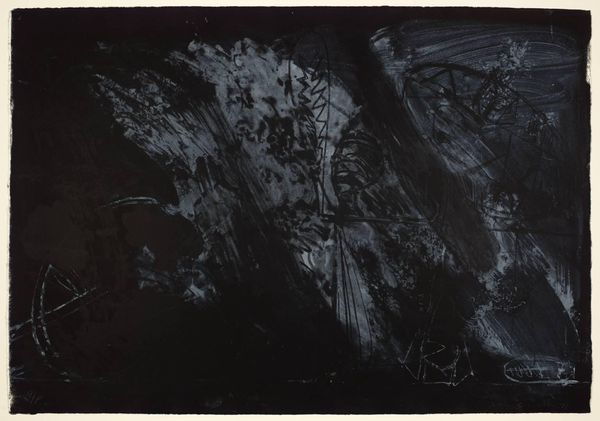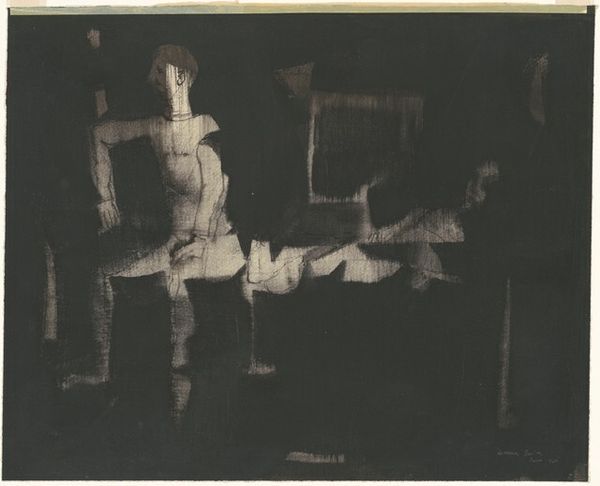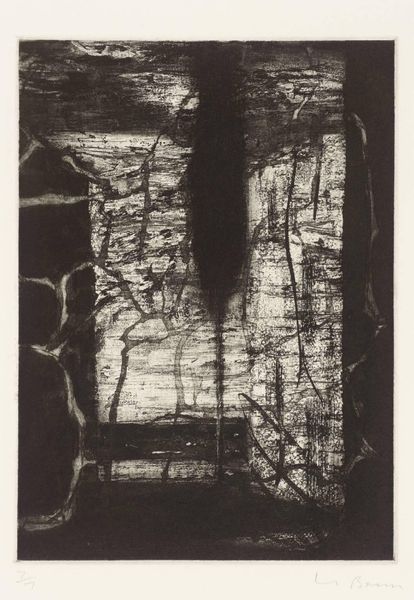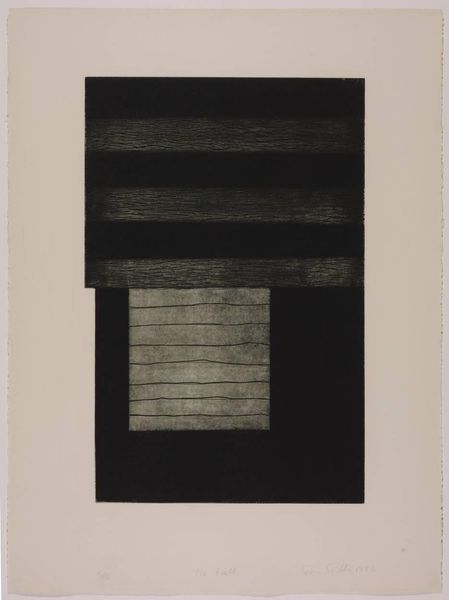
Dimensions: plate: 61.6 × 60.64 cm (24 1/4 × 23 7/8 in.) sheet: 107 × 78.11 cm (42 1/8 × 30 3/4 in.)
Copyright: National Gallery of Art: CC0 1.0
Editor: So, here we have Jim Dine’s "Bolt Cutters (second state)" from 1973. It’s a print, using etching and graphite on paper. It's quite abstract, almost like an industrial landscape rendered in a dream. What strikes you about it? Curator: The emphasis here should be on the *making*. Look at the visible process – the graphite, the etched lines. They aren't just depicting something, they *are* the subject. How does the act of applying pressure, of incising the plate, reflect the industrial object it portrays? The "Bolt Cutters" aren’t pristine; they’re worked, worn. Does that resonate with Dine’s perspective on labor and production? Editor: I see what you mean. It's not just *of* bolt cutters, it's *about* how they are made and used. All that chaotic cross-hatching really shows the force required. So you're saying the way it's made, the process, reflects something bigger? Curator: Exactly. The means of production aren’t neutral. They’re embedded with social and historical meaning. Dine elevates a commonplace tool, and in doing so prompts us to think about the relationship between humans, tools, and labor. Are we to view this art within a hierarchy of the means and materials when, in essence, laboring upon graphite on paper bears striking resemblance to working iron and steel? Editor: That makes me think about how the materials themselves – graphite, etching – suggest different kinds of labor, maybe artistic labor versus manual labor. Thanks, that’s a really interesting way to look at it. Curator: It all encourages us to investigate how value and meaning are constructed through the art object.
Comments
No comments
Be the first to comment and join the conversation on the ultimate creative platform.


